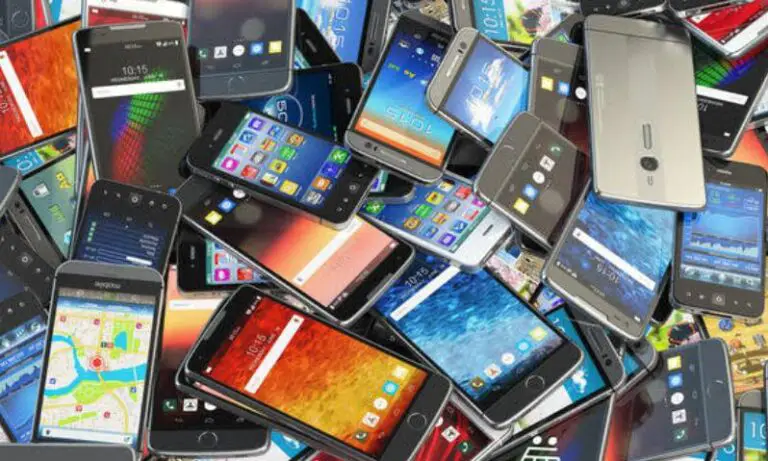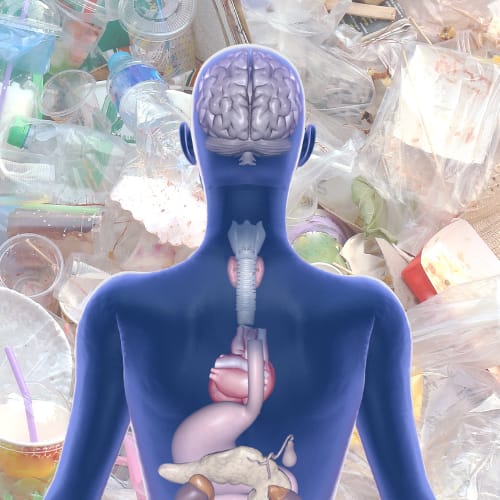The Internet of Things (IoT) refers to a network of interconnected physical devices embedded with sensors, actuators, and other technologies that enable them to collect and exchange data. These devices, often everyday objects, connect to the internet, facilitating communication and collaboration to enhance efficiency and functionality. The concept of IoT emerged in the late 20th century, gaining momentum in the early 21st century as advancements in connectivity and miniaturization technologies proliferated. IoT devices encompass a wide range of applications, including smart homes, industrial automation, healthcare monitoring, and transportation systems. Smart thermostats, wearable fitness trackers, and connected vehicles are examples of IoT devices that have become increasingly prevalent. IoT continues to evolve, influencing various industries and shaping the way individuals interact with their surroundings. The integration of IoT devices and applications aims to streamline processes, optimize resource utilization, and improve overall convenience and productivity in both personal and professional spheres.
Internet of Things (IoT) Devices
The Internet of Things (IoT) has become an integral part of our daily lives, transforming the way we interact with the world around us. From smart homes and wearable devices to industrial applications, IoT has permeated various sectors, promising increased efficiency, connectivity, and convenience. In this article, we will delve into the latest trends and innovations in IoT devices, exploring how they are reshaping our world and paving the way for a more connected future.
1. IoT in Everyday Life: In recent years, IoT has seamlessly integrated into our daily routines, making our lives more efficient and interconnected. Smart home devices, such as thermostats, lights, and security systems, have become commonplace. Voice-activated assistants like Amazon Alexa and Google Assistant have evolved to understand and respond to natural language, enhancing user experience. Wearable devices, from fitness trackers to smartwatches, continuously monitor our health, providing valuable insights and promoting a proactive approach to well-being.
2. 5G and Edge Computing: The advent of 5G technology has been a game-changer for IoT. With faster and more reliable connectivity, 5G enables real-time communication between devices, opening up new possibilities for applications like autonomous vehicles and smart cities. Additionally, edge computing has gained prominence, allowing data processing to occur closer to the source, reducing latency and improving overall system performance.
3. Industrial IoT (IIoT) and Industry 4.0: In the industrial landscape, IoT has given rise to the concept of Industry 4.0, where smart factories leverage interconnected devices and systems to enhance efficiency and productivity. Sensors embedded in machinery collect real-time data, enabling predictive maintenance and minimizing downtime. IIoT also facilitates the seamless exchange of information between different components of the supply chain, optimizing logistics and inventory management.
4. Security Challenges and Solutions: As IoT devices become more prevalent, concerns about security and privacy have escalated. The vast amount of data generated by interconnected devices poses potential risks if not adequately protected. Manufacturers are increasingly prioritizing security features, including encryption protocols and regular software updates, to safeguard user data. Blockchain technology is also being explored as a means to enhance the security of IoT networks.
5. Artificial Intelligence (AI) and Machine Learning (ML) in IoT: The integration of AI and ML technologies with IoT devices has unlocked new possibilities for automation and data analysis. Smart devices can now learn from user behavior and adapt to preferences over time. In healthcare, AI-driven IoT applications can analyze medical data to assist in diagnosis and personalized treatment plans. These advancements mark a significant leap towards creating truly intelligent and autonomous systems.
6. Environmental Sustainability with IoT: IoT is playing a crucial role in addressing environmental challenges by promoting sustainability and resource efficiency. Smart grids optimize energy distribution, reducing waste and lowering carbon footprints. Agriculture is benefitting from precision farming, where IoT devices monitor soil conditions, weather patterns, and crop health to optimize irrigation and fertilization. IoT is thus contributing to a more sustainable and eco-friendly future.
7. The Rise of Edge AI: Edge AI combines the power of artificial intelligence with edge computing, enabling devices to process data locally without relying on a centralized cloud. This not only reduces latency but also enhances privacy by keeping sensitive data closer to the source. Edge AI is particularly valuable in applications like autonomous vehicles, where split-second decision-making is critical.
8. IoT in Healthcare: Remote Monitoring and Telemedicine: The healthcare sector has witnessed a paradigm shift with the integration of IoT devices. Remote patient monitoring allows healthcare providers to track vital signs and manage chronic conditions without the need for frequent hospital visits. Telemedicine platforms, powered by IoT, connect patients with healthcare professionals, providing timely consultations and improving accessibility to medical services.
9. Challenges and Ethical Considerations: Despite the remarkable advancements, the widespread adoption of IoT devices has raised ethical concerns. Issues such as data privacy, consent, and the potential misuse of personal information demand careful consideration. Striking a balance between innovation and ethical principles is crucial to ensure the responsible development and deployment of IoT technologies.
10. Future Trends and Beyond: Looking ahead, the evolution of IoT devices shows no signs of slowing down. The integration of quantum computing with IoT holds the promise of solving complex problems at unprecedented speeds. Additionally, the concept of “Digital Twins,” virtual replicas of physical objects or systems, is gaining traction, offering new possibilities for simulation, analysis, and optimization.
The Internet of Things has evolved from a concept to a reality, seamlessly integrating into various aspects of our lives. From smart homes and industrial applications to healthcare and environmental sustainability, IoT devices are shaping the future of technology. As we navigate the ever-expanding landscape of interconnected devices, addressing security challenges, ethical considerations, and staying attuned to emerging trends will be crucial in harnessing the full potential of IoT for a connected and intelligent world.
Internet of Things (IoT) Applications
The Internet of Things (IoT) has emerged as a revolutionary paradigm, connecting devices and enabling them to communicate and share data seamlessly. This interconnected web of smart devices has paved the way for a myriad of applications across various industries, fundamentally transforming the way we live and work. This article delves into the diverse landscape of IoT applications, exploring their impact on industries such as healthcare, agriculture, transportation, smart cities, and more. By examining real-world examples and envisioning future possibilities, we aim to unravel the potential of IoT in shaping a connected and efficient world.
1. Introduction:
The Internet of Things (IoT) represents a technological leap that has transcended traditional boundaries, ushering in an era of interconnected devices and intelligent systems. At its core, IoT involves the interconnection of everyday objects, equipped with sensors, actuators, and communication modules, allowing them to collect, exchange, and act upon data. The applications of IoT are far-reaching, impacting various sectors and aspects of our daily lives. In this article, we will explore the extensive range of IoT applications, emphasizing their significance and potential for innovation.
2. Healthcare:
One of the most impactful domains where IoT applications have demonstrated transformative potential is healthcare. The integration of IoT devices in healthcare systems has ushered in a new era of personalized and remote patient care. Wearable devices, such as smartwatches and fitness trackers, continuously monitor vital signs, allowing individuals and healthcare professionals to track health metrics in real-time. This real-time data facilitates early detection of health issues, enabling timely interventions and reducing the burden on healthcare facilities. IoT-enabled medical devices, such as smart insulin pumps and connected inhalers, enhance the management of chronic conditions by providing patients with actionable insights and automated adjustments. Additionally, in hospital settings, IoT applications streamline operations by optimizing resource utilization, tracking inventory, and improving patient care through smart monitoring systems.
3. Agriculture:
In the agricultural sector, IoT applications are revolutionizing traditional farming practices, leading to the concept of smart agriculture or precision farming. IoT sensors deployed in fields collect data on soil moisture, temperature, and crop health, enabling farmers to make informed decisions regarding irrigation, fertilization, and pest control. This data-driven approach enhances crop yield, reduces resource wastage, and promotes sustainable farming practices. Furthermore, the use of drones equipped with IoT sensors allows for aerial monitoring of large agricultural areas, providing a comprehensive view of crop health and identifying potential issues. The integration of IoT in agriculture not only increases efficiency but also contributes to the global effort towards food security and sustainable farming.
4. Transportation:
IoT applications have significantly impacted the transportation sector, leading to the development of smart and connected transportation systems. Smart vehicles equipped with IoT sensors and communication modules enable real-time monitoring of traffic conditions, enhancing traffic management and reducing congestion. In addition, IoT plays a crucial role in the development of autonomous vehicles, enabling them to communicate with each other and with infrastructure for safer and more efficient transportation. IoT is also employed in logistics and fleet management, optimizing route planning, monitoring vehicle health, and improving overall operational efficiency. With the integration of IoT, transportation systems are evolving towards a more connected, efficient, and environmentally sustainable future.
5. Smart Cities:
The concept of smart cities revolves around leveraging IoT technologies to enhance urban living through efficient resource management, improved infrastructure, and increased connectivity. IoT applications in smart cities encompass a wide range of areas, including energy management, waste management, public safety, and urban mobility. Smart grids, equipped with IoT sensors, optimize energy distribution, reduce wastage, and facilitate the integration of renewable energy sources. Waste management systems utilize IoT devices to monitor garbage levels in bins, enabling timely collection and reducing operational costs. In terms of public safety, IoT-powered surveillance systems enhance security through real-time monitoring and predictive analytics.
6. Industrial IoT (IIoT):
In the industrial landscape, the integration of IoT has given rise to Industrial IoT (IIoT), transforming traditional manufacturing processes into highly efficient and interconnected systems. IIoT applications include predictive maintenance, real-time monitoring of equipment, and supply chain optimization. By deploying sensors on machinery, manufacturers can collect data on equipment performance, enabling predictive maintenance to prevent unplanned downtime and optimize productivity. IIoT also facilitates the creation of smart factories, where machines communicate with each other to adapt to changing production requirements, resulting in increased flexibility and efficiency.
7. Retail:
In the retail sector, IoT applications are enhancing the overall shopping experience for consumers while providing retailers with valuable insights into customer behavior. IoT-enabled smart shelves, equipped with sensors, monitor product levels and send restocking alerts to optimize inventory management. In-store beacons communicate with shoppers’ smartphones, providing personalized promotions and recommendations based on their preferences and location within the store. Moreover, IoT contributes to the development of cashier-less stores, where customers can seamlessly make purchases without traditional checkout processes. This not only improves the efficiency of retail operations but also enhances the convenience and satisfaction of the customer.
8. Environmental Monitoring:
IoT applications play a crucial role in environmental monitoring, helping to address climate change and promote sustainable practices. Sensors deployed in natural habitats and ecosystems collect data on air quality, water quality, and biodiversity, providing researchers and environmentalists with valuable insights into the health of our planet. Additionally, IoT technologies are employed in disaster management, offering real-time data on natural disasters such as earthquakes, floods, and wildfires. This enables timely responses and better coordination of resources for disaster relief efforts.
9. Consumer IoT:
The realm of consumer IoT encompasses a wide array of applications designed to enhance convenience and connectivity in our daily lives. Smart homes, equipped with IoT devices, allow homeowners to control lighting, heating, security systems, and more through centralized platforms or voice-activated assistants. IoT-enabled kitchen appliances, thermostats, and entertainment systems contribute to the concept of a connected and automated living space. Furthermore, wearable devices, such as smartwatches and fitness trackers, have become integral parts of many people’s lives, providing insights into physical activity, sleep patterns, and overall health. The continuous evolution of consumer IoT applications continues to redefine the way we interact with our surroundings and technology.
10. Future Perspectives:
As we look ahead, the potential for IoT applications seems boundless. Emerging technologies such as 5G, artificial intelligence (AI), and edge computing are poised to further enhance the capabilities of IoT, enabling faster data transmission, more sophisticated analytics, and decentralized processing. The convergence of these technologies holds the promise of unlocking new possibilities across various sectors. In healthcare, the integration of AI with IoT could lead to more accurate diagnostics and personalized treatment plans. In agriculture, the combination of IoT and AI could enable autonomous farming systems capable of making complex decisions based on real-time data. Smart cities may evolve into even more connected and sustainable ecosystems, with AI-driven algorithms optimizing resource allocation and predicting urban trends.However, the increasing adoption of IoT also raises concerns related to data security, privacy, and ethical considerations. As more devices become interconnected, the need for robust cybersecurity measures becomes paramount to protect sensitive information and prevent malicious attacks on IoT systems.
11. Challenges and Considerations:
While the potential benefits of IoT applications are substantial, several challenges and considerations must be addressed to ensure their widespread adoption and success. These challenges include:
a. Security and Privacy Concerns: The interconnected nature of IoT devices raises concerns about data security and privacy. Ensuring robust cybersecurity measures and implementing privacy-preserving practices are essential to mitigate these risks.
b. Standardization: The lack of standardized protocols for communication and data exchange among IoT devices hinders seamless integration and interoperability. Standardization efforts are crucial to fostering a more cohesive IoT ecosystem.
c. Scalability: As the number of connected devices continues to grow, scalability becomes a critical consideration. Developing scalable infrastructure and protocols is essential to accommodate the increasing volume of data generated by IoT devices.
d. Energy Efficiency: Many IoT devices operate on battery power, making energy efficiency a key concern. The development of low-power devices and energy-efficient communication protocols is crucial to extending the lifespan of IoT devices and reducing environmental impact.
e. Regulatory Frameworks: The evolving nature of IoT technology requires adaptive regulatory frameworks to address legal and ethical concerns. Governments and regulatory bodies play a pivotal role in establishing guidelines that balance innovation with user protection.
The Internet of Things has transcended its status as a technological buzzword to become a transformative force across diverse industries. The myriad of IoT applications we explored in this article highlights its potential to reshape how we live, work, and interact with the world around us. From healthcare and agriculture to transportation, smart cities, and beyond, IoT is driving innovation, improving efficiency, and fostering a more connected and sustainable future. As we navigate the evolving landscape of IoT, it is crucial to address challenges related to security, privacy, standardization, scalability, and energy efficiency. By doing so, we can unlock the full potential of IoT and harness its power to create a more intelligent, interconnected, and efficient world. The ongoing collaboration between industry stakeholders, researchers, and policymakers will play a pivotal role in
Conclusion
The Internet of Things (IoT) has ushered in a transformative era, redefining the way we interact with technology and the world around us. The proliferation of IoT devices and applications has seamlessly integrated the digital and physical realms, fostering unprecedented connectivity and convenience. These smart devices, ranging from home appliances to industrial sensors, have not only streamlined daily tasks but also enhanced efficiency across various sectors. IoT’s impact extends beyond mere convenience; it plays a pivotal role in data-driven decision-making, enabling businesses and individuals to make informed choices based on real-time information. The interconnectedness of devices has opened avenues for innovation in healthcare, agriculture, transportation, and more. However, as the IoT ecosystem expands, concerns about data security, privacy, and standardization have emerged, necessitating comprehensive frameworks and regulations. Despite these challenges, the trajectory of IoT suggests continued growth and evolution. As technology advances, the synergy between devices and applications will likely result in even more sophisticated solutions, shaping a future where connectivity seamlessly integrates into the fabric of everyday life, fostering efficiency, sustainability, and improved quality of life. The transformative potential of IoT remains vast, offering boundless possibilities for the interconnected world of tomorrow.







Leave a Reply